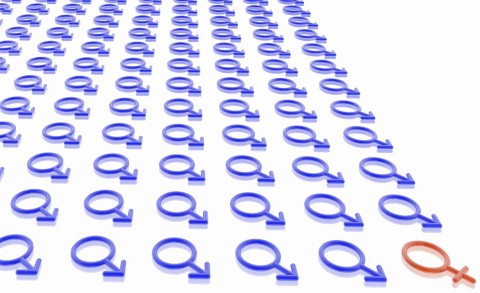Crowds and clouds
“Creativity is individual, and it is social,” state the authors of a paper delivered at the inaugural Collective Intelligence Conference held at MIT in April 2012. Titled Collective Creativity: Where we are and where we might go (Yu, Nickerson and Sakamoto, 2012), the authors argue that collective creativity is an emergent field of increasing interest “as systems have emerged that mobilize large numbers of people to engage in creative tasks.” In an age of crowds and clouds – crowd sourcing, crowd funding, cloud computing – we might ask whether the skills and dynamics that enable creativity to thrive in physical problem-solving groups, find their way into cyberspace as well.
 Another paper from the same conference provides some clues. First published in 2011, the research had already attracted global attention. Titled Evidence for a Collective Intelligence Factor in the Performance of Human Groups, Anita Woolley and colleagues from Carnegie Mellon tested around 699 people using a battery of tests and puzzles often used to determine individual IQ, autism and group creativity. The main findings were:
Another paper from the same conference provides some clues. First published in 2011, the research had already attracted global attention. Titled Evidence for a Collective Intelligence Factor in the Performance of Human Groups, Anita Woolley and colleagues from Carnegie Mellon tested around 699 people using a battery of tests and puzzles often used to determine individual IQ, autism and group creativity. The main findings were:
- high IQ is not a predictor of collective intelligence in groups
- high c (as they ascribed it) depended on social sensitivity, including turn taking, which was a vital ingredient and had a lot to do with being able to read facial expressions (empathy)
- the number of women in a group was significant; probably, they say, because women are more likely to engage in turn taking.
The director of MIT’s Collective Intelligence Lab, Thomas Malone, quite rightly says that collective intelligence (often shortened to CI) is not new, and that collective stupidity is just as common. What is new is internet-enabled collective intelligence. If we want to predict where that might take us as a species, then we need the ask: How can people and computers be connected so that—collectively—they act more intelligently than any person, group or computer has ever done before?
The internet-enabled practices we see popping up around the world, like the crowd sourcing of OCR text correction mentioned in my post on Trove, are definitely collective, but are they creative? I don’t know the answer. But I wonder whether a combination of these things – trust, context, community and social sensitivity – might signal the potential for collective intelligence to emerge in the hybrid worlds in which we now live and work. It is not like you could pull them apart and necessarily make a causal link between each one to the final outcomes, a collective that can “create, innovate and invent” (Lévy, 2010), but together they can fuel a collectively intelligent community of practice – not CI as a noun so much, but CI as an ever mutable verb. And it probably helps to have more women in the crowd….. and the cloud.
References
Lévy, P. (2010) ‘From social computing to reflexive collective intelligence: The IEML research program’, Information Sciences 180, 71-94. Elsevier
Yu, L., Nickerson, J., Sakamoto, Y. ‘Collective Creativity: Where we are and where we might go’, Comments: Presented at Collective Intelligence conference, 2012 (arXiv:1204.2991)
Woolley, A. (et al) ‘Evidence for a Collective Intelligence Factor in the Performance of Human Groups’, Science 330, 686 (2010);
DOI: 10.1126/science.1193147


